
As a programming language widely used in the field of software development, C language is the first choice for many beginner programmers. Learning C language can not only help us establish the basic knowledge of programming, but also improve our problem-solving and thinking abilities. This article will introduce in detail a C language learning roadmap to help beginners better plan their learning process.
1. Learn basic grammar
Before starting to learn C language, we first need to understand the basic grammar rules of C language. This includes basic concepts such as variables and data types, operators, control statements (such as if statements, loop statements, etc.), functions, etc. By learning these basic knowledge, we can master the basic structure and grammatical rules of C language.
2. Understand pointers and memory management
Pointers in C language are an important concept, which allow us to directly access and operate data in memory. Therefore, understanding pointers and memory management is the key to learning C language. Beginners can start by learning the basic concepts of pointers, such as the definition, use and operation of pointers. You can then further learn about dynamic memory allocation and deallocation, as well as common memory management techniques such as the handling of memory leaks and dangling pointers.
3. Master arrays and strings
Arrays and strings are commonly used data structures in C language. Mastering them is very important for writing complex programs. Beginners can first learn the basic concepts of arrays, such as array definition, initialization and access. Then, you can learn multidimensional arrays and advanced manipulation techniques with arrays. Next, you can learn the basic concepts of strings and how to use string processing functions.
4. Be familiar with file operations
In actual software development, it is often necessary to read and write files. C language provides a wealth of file operation functions, such as fopen, fclose, fread, fwrite, etc. Learning file operations can help us process and manage files, which is very important for developing large-scale software in the future.
5. Learn common library functions
C language provides many commonly used library functions, which can help us develop programs faster. Common library functions include mathematical functions (such as sin, cos, sqrt, etc.), string processing functions (such as strlen, strcpy, strcat, etc.), etc. Beginners can understand their usage and functions by reading the documentation and sample codes of library functions.
6. Practice projects
The most important step in learning C language is to carry out practice projects. In the process of writing programs by ourselves, we can use the knowledge we have learned before to solve practical problems. Beginners can start with simple projects and gradually increase the difficulty. For example, you could write a calculator, a simple text processing tool, or a simple game.
7. In-depth learning
Once you have mastered the basic knowledge and skills of C language, beginners can choose to learn some advanced topics in depth. This includes data structures, algorithms, multi-threaded programming, network programming, etc. Learning these topics in depth helps improve our programming skills and lays a solid foundation for learning other programming languages in the future.
In short, learning C language is a challenging but fun process. By following the above learning roadmap, beginners can gradually master the basic knowledge of C language, improve their programming skills, and continue to grow in practice. I hope this article can help beginners better plan their learning process, come on!
The above is the detailed content of Detailed analysis of C language learning route. For more information, please follow other related articles on the PHP Chinese website!
 GitLab的版本发布规划和路线图管理Oct 20, 2023 pm 01:57 PM
GitLab的版本发布规划和路线图管理Oct 20, 2023 pm 01:57 PMGitLab的版本发布规划和路线图管理近年来,随着软件开发的不断演进,版本发布和路线图管理对于项目的成功和持续发展起着至关重要的作用。作为一种源代码管理工具,GitLab不仅提供了代码托管和协作的功能,同时也提供了版本发布规划和路线图管理的功能,可以帮助团队更好地组织、跟踪和管理项目的进度。版本发布规划是指在项目开发过程中,确定合理的版本发布周期和版本内容的
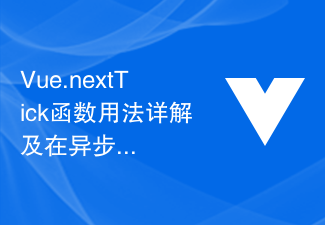 Vue.nextTick函数用法详解及在异步更新中的应用Jul 26, 2023 am 08:57 AM
Vue.nextTick函数用法详解及在异步更新中的应用Jul 26, 2023 am 08:57 AMVue.nextTick函数用法详解及在异步更新中的应用在Vue开发中,经常会遇到需要进行异步更新数据的情况,比如在修改DOM后需要立即更新数据或者在数据更新后需要立即进行相关操作。而Vue提供的.nextTick函数就是为了解决这类问题而出现的。本文就会详细介绍Vue.nextTick函数的用法,并结合代码示例来说明它在异步更新中的应用。一、Vue.nex
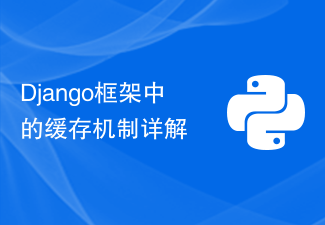 Django框架中的缓存机制详解Jun 18, 2023 pm 01:14 PM
Django框架中的缓存机制详解Jun 18, 2023 pm 01:14 PM在Web应用程序中,缓存通常是用来优化性能的重要手段。Django作为一款著名的Web框架,自然也提供了完善的缓存机制来帮助开发者进一步提高应用程序的性能。本文将对Django框架中的缓存机制进行详解,包括缓存的使用场景、建议的缓存策略、缓存的实现方式和使用方法等方面。希望对Django开发者或对缓存机制感兴趣的读者有所帮助。一、缓存的使用场景缓存的使用场景
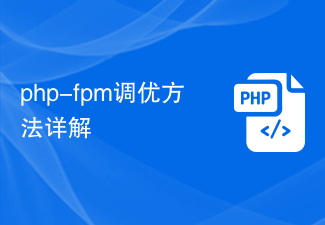 php-fpm调优方法详解Jul 08, 2023 pm 04:31 PM
php-fpm调优方法详解Jul 08, 2023 pm 04:31 PMPHP-FPM是一种常用的PHP进程管理器,用于提供更好的PHP性能和稳定性。然而,在高负载环境下,PHP-FPM的默认配置可能无法满足需求,因此我们需要对其进行调优。本文将详细介绍PHP-FPM的调优方法,并给出一些代码示例。一、增加进程数默认情况下,PHP-FPM只启动少量的进程来处理请求。在高负载环境下,我们可以通过增加进程数来提高PHP-FPM的并发
 PHP function_exists()函数用法详解Jun 27, 2023 am 10:32 AM
PHP function_exists()函数用法详解Jun 27, 2023 am 10:32 AM在PHP开发中,有时我们需要判断某个函数是否可用,这时我们便可以使用function_exists()函数。本文将详细介绍function_exists()函数的用法。一、什么是function_exists()函数?function_exists()函数是PHP自带的一个内置函数,用于判断某个函数是否被定义。该函数返回一个布尔值,如果函数存在返回True,
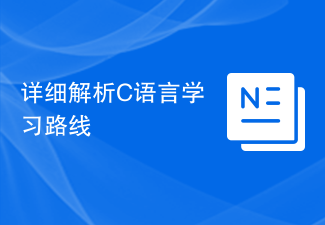 详细解析C语言学习路线Feb 18, 2024 am 10:38 AM
详细解析C语言学习路线Feb 18, 2024 am 10:38 AMC语言作为一门广泛应用在软件开发领域的编程语言,是很多程序员初学者的首选。学习C语言不仅可以帮助我们建立编程的基础知识,还可以提升我们解决问题和思考的能力。本文将详细介绍一条C语言学习的路线图,帮助初学者更好地规划自己的学习进程。1.学习基本语法在开始学习C语言之前,我们首先需要了解C语言的基本语法规则。这包括变量和数据类型、运算符、控制语句(如if语句、
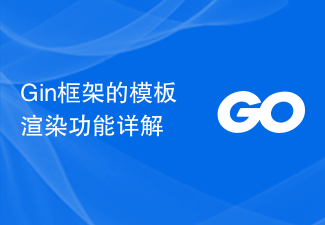 Gin框架的模板渲染功能详解Jun 22, 2023 pm 10:37 PM
Gin框架的模板渲染功能详解Jun 22, 2023 pm 10:37 PMGin框架是目前非常流行的Go语言Web框架之一。作为一个轻量级的框架,Gin提供了丰富的功能和灵活的架构,使得它在Web开发领域中备受欢迎。其中一个特别重要的功能是模板渲染。在本文中,我们将介绍Gin框架的模板渲染功能,并深入了解它的实现原理。一、Gin框架的模板渲染功能Gin框架使用了多种模板渲染引擎来构建Web应用程序。目前,它支持以下几种模板引擎:
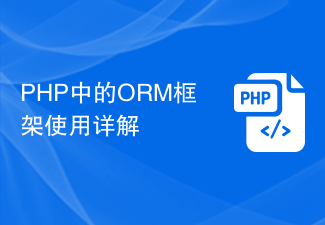 PHP中的ORM框架使用详解Jun 23, 2023 am 11:22 AM
PHP中的ORM框架使用详解Jun 23, 2023 am 11:22 AMORM(Object-RelationalMapping)框架是一种用于将面向对象编程语言中的对象模型与关系型数据库之间映射的技术。它使开发人员能够使用面向对象的方式操作数据库,而不需要直接操作SQL语言。在PHP开发领域中,ORM框架也得到了广泛的应用。本文将详细介绍PHP中的ORM框架使用方法。一、ORM框架的优点使用ORM框架有以下优点:1.提高开发


Hot AI Tools

Undresser.AI Undress
AI-powered app for creating realistic nude photos

AI Clothes Remover
Online AI tool for removing clothes from photos.

Undress AI Tool
Undress images for free

Clothoff.io
AI clothes remover

AI Hentai Generator
Generate AI Hentai for free.

Hot Article

Hot Tools

PhpStorm Mac version
The latest (2018.2.1) professional PHP integrated development tool

DVWA
Damn Vulnerable Web App (DVWA) is a PHP/MySQL web application that is very vulnerable. Its main goals are to be an aid for security professionals to test their skills and tools in a legal environment, to help web developers better understand the process of securing web applications, and to help teachers/students teach/learn in a classroom environment Web application security. The goal of DVWA is to practice some of the most common web vulnerabilities through a simple and straightforward interface, with varying degrees of difficulty. Please note that this software

SecLists
SecLists is the ultimate security tester's companion. It is a collection of various types of lists that are frequently used during security assessments, all in one place. SecLists helps make security testing more efficient and productive by conveniently providing all the lists a security tester might need. List types include usernames, passwords, URLs, fuzzing payloads, sensitive data patterns, web shells, and more. The tester can simply pull this repository onto a new test machine and he will have access to every type of list he needs.

Safe Exam Browser
Safe Exam Browser is a secure browser environment for taking online exams securely. This software turns any computer into a secure workstation. It controls access to any utility and prevents students from using unauthorized resources.

MinGW - Minimalist GNU for Windows
This project is in the process of being migrated to osdn.net/projects/mingw, you can continue to follow us there. MinGW: A native Windows port of the GNU Compiler Collection (GCC), freely distributable import libraries and header files for building native Windows applications; includes extensions to the MSVC runtime to support C99 functionality. All MinGW software can run on 64-bit Windows platforms.







